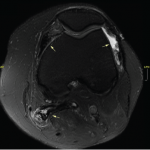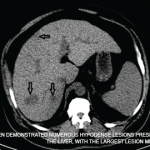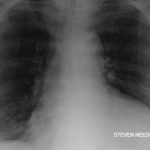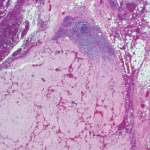During a session at the 2019 ACR/ARP Annual Meeting, Lisa Christopher-Stine, MD, MPH, provided valuable recommendations and practical insights into the care and treatment of myositis patients…


During a session at the 2019 ACR/ARP Annual Meeting, Lisa Christopher-Stine, MD, MPH, provided valuable recommendations and practical insights into the care and treatment of myositis patients…

ATLANTA—The authors of the new draft ACR treatment guideline for the management of gout presented the draft guideline on Nov. 13 at the 2019 ACR/ARP Annual Meeting. Based on evidence from more than 130 published studies, there are 42 recommendations, of which 16 were strong, including 27 for urate-lowering therapy (ULT) management, 13 of which…

Shuwei Wang, MD, Gulam A. Manji, MD, PhD, & Anca D. Askanase, MD |
Immune checkpoint inhibitors (ICIs) targeting the cytotoxic T-lymphocyte-associated protein 4 (CTLA-4) or programmed cell death protein 1 (PD-1) axes have revolutionized therapy and improved survival in advanced cancers. However, these immune system modulators also lead to immune-related adverse events (IRAEs).1,2 In clinical trials, IRAEs mainly involved the gastrointestinal tract, skin, endocrine glands, liver and lung,…

Raj Vachhani, MD, & Angelo L. Gaffo, MD, MSPH |
Case Presentation A 45-year-old man with crystal-proven gout, poorly controlled diabetes and chronic kidney disease was lost to follow-up for six years and presented back to the VA clinic in the midst of a gout flare. He stated he had continued taking 100 mg of allopurinol daily, but his serum urate level was 13.8 mg/dL….

Sirajum Munira, MD, Mamta Sherchan, MD, & Christopher Collins, MD, FACR |
Rheumatoid arthritis (RA) is a chronic systemic autoimmune inflammatory disease. Although RA develops its central pathology within the synovium of diarthrodial joints, many non-articular organs can be involved, particularly in patients with severe joint disease.1 Although most patients are asymptomatic, cardiac involvement is relatively common and includes rheumatic heart nodules, pericarditis (30–50%), pericardial effusion and…
Funck-Brentano et al. hypothesized that causal associations for osteoarthritis (OA) may differ by site, and they undertook this study to identify causal risk factors of knee, hip and hand OA.

Tej Bhavsar, MD, & Nancy Joste, MD |
A 54-year-old African American man arrived at the emergency department with the acute onset of a tender mass on the left side of his neck. It had been getting progressively larger for the preceding two days. History & Examination His history included chronic right hip osteoarthritis with two surgeries performed five years prior. At his…

When evaluating patients with possible myopathic symptoms, rheumatologists must consider a rare, but important, group of inherited disorders: the metabolic myopathies. However, their diagnosis often remains a challenge. Early recognition of these primary metabolic myopathies is essential to help prevent disease morbidity and mortality from rhabdomyolysis. Here, we focus on the metabolic myopathies that present…

Ronald J. Anderson, MD |
What attracts physicians to a career in rheumatology? Traditionally, the foundation of clinical training at both the medical student and house staff level is based on inpatient services. There are many reasons for this, predominantly revolving around access to patients available for teaching. The result: Trainees are predominantly exposed to a group of conditions that…
Reuters Staff |
NEW YORK (Reuters Health)—Nearly three in 10 patients seeking care at the emergency department (ED) for acute gout will be discharged with a prescription for opioids, new research shows. “Our study suggests a high use of prescription opioid in patients discharged from the ED with a diagnosis of gout, a condition that can be managed…